Eckert Crane Days 2026
Date: Sat/Sun, March 21 and 22 BCAS Guide Bird Watching, Fruitgrowers Reservoir, 9:00 a.m. to noon daily
Interactive presentation on the SPARKBIRD project, March 19th, Delta Public Library, 6:00-8:00 p.m.
Western States Ranch BBQ at Hart's Basin, Saturday, March 21st, noon (Free and open to the public)
Fall Bird Migration
By Bruce Ackerman, Black Canyon Audubon Society
Fall is one of my favorite times of year for bird-watching. Many birds are migrating south through our part of Colorado. I am often visiting favorite birding spots near my home in Montrose, and all along from Delta to Ouray counties. I often find myself at Confluence City Park in Delta, Cerise City Park in Montrose, and Ridgway State Park in Ridgway.
Birds are migrating through our area by the thousands. Some migrate very far, some go shorter distances. Some arrive here from far in the North, others travel from here far to the South. Many of the smaller birds migrate at night. (If you are a small bird, the predators of small birds are migrating during the day, so it is safer for you to travel at night, and it’s also cooler then.) As a birder, you won’t see them flying by at night, but you might spot them feeding busily the next morning where they have touched down. They are in a hurry to eat and build up their fat reserves, to be ready for the next night flight. Most small birds actually migrate alone, not in flocks. Youngsters know how to get from where they hatched to their winter destinations on their own, even if they just hatched this summer. Some birds have been proven to navigate at night by the stars and the moon, by magnetic fields, and by orienting to distant sounds.
Some species head south as early as July, such as adult male Rufous Hummingbirds. Bullock’s Orioles and many shorebirds are also headed farther south while it is still summer here. Why do they leave here so soon, when there is still lots of food here? And yet others are still arriving as late as January, like some ducks, geese, and hawks, if the weather gets extra cold farther north.
Some of my favorite birds (I have a lot) are notable because they have distinctive migration patterns:
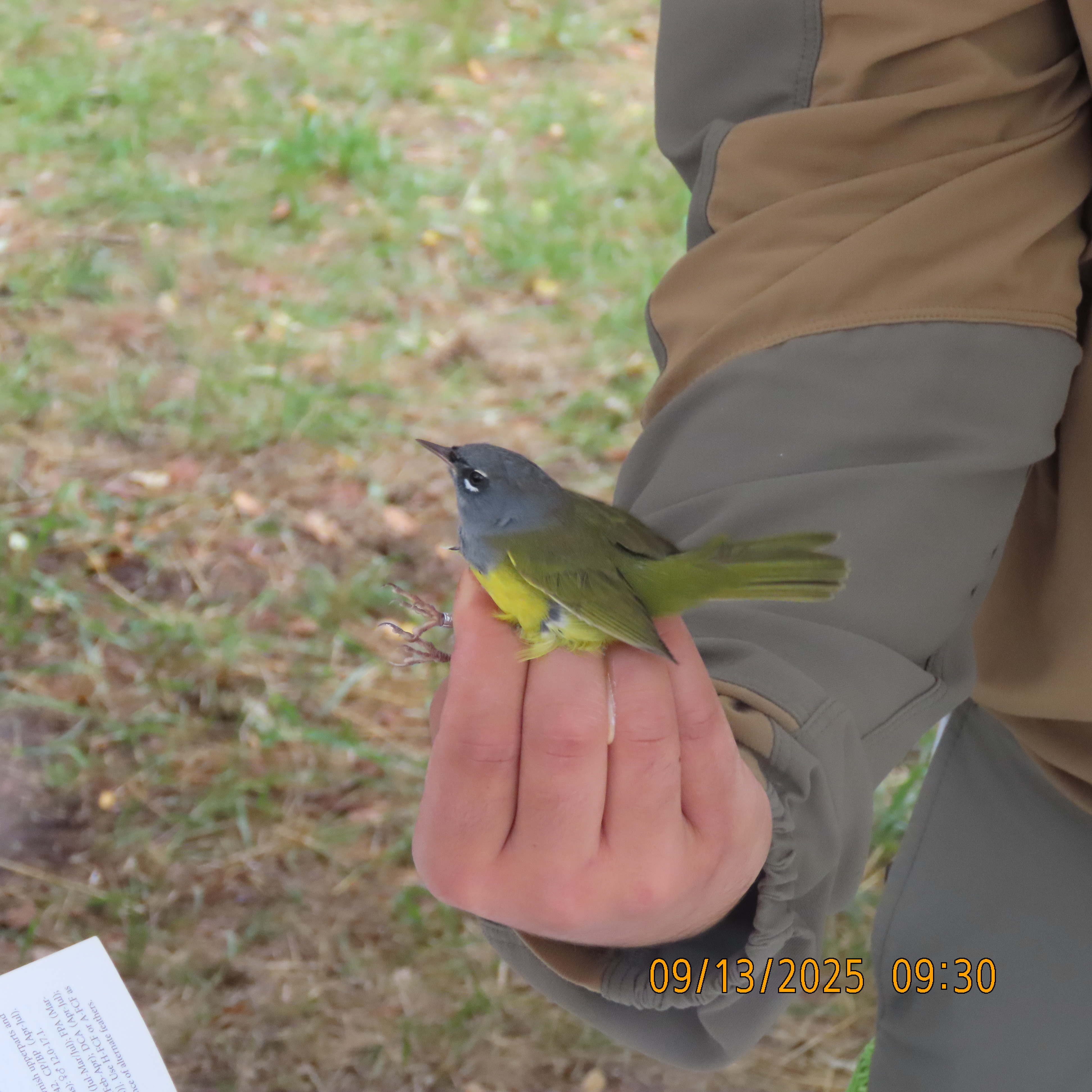
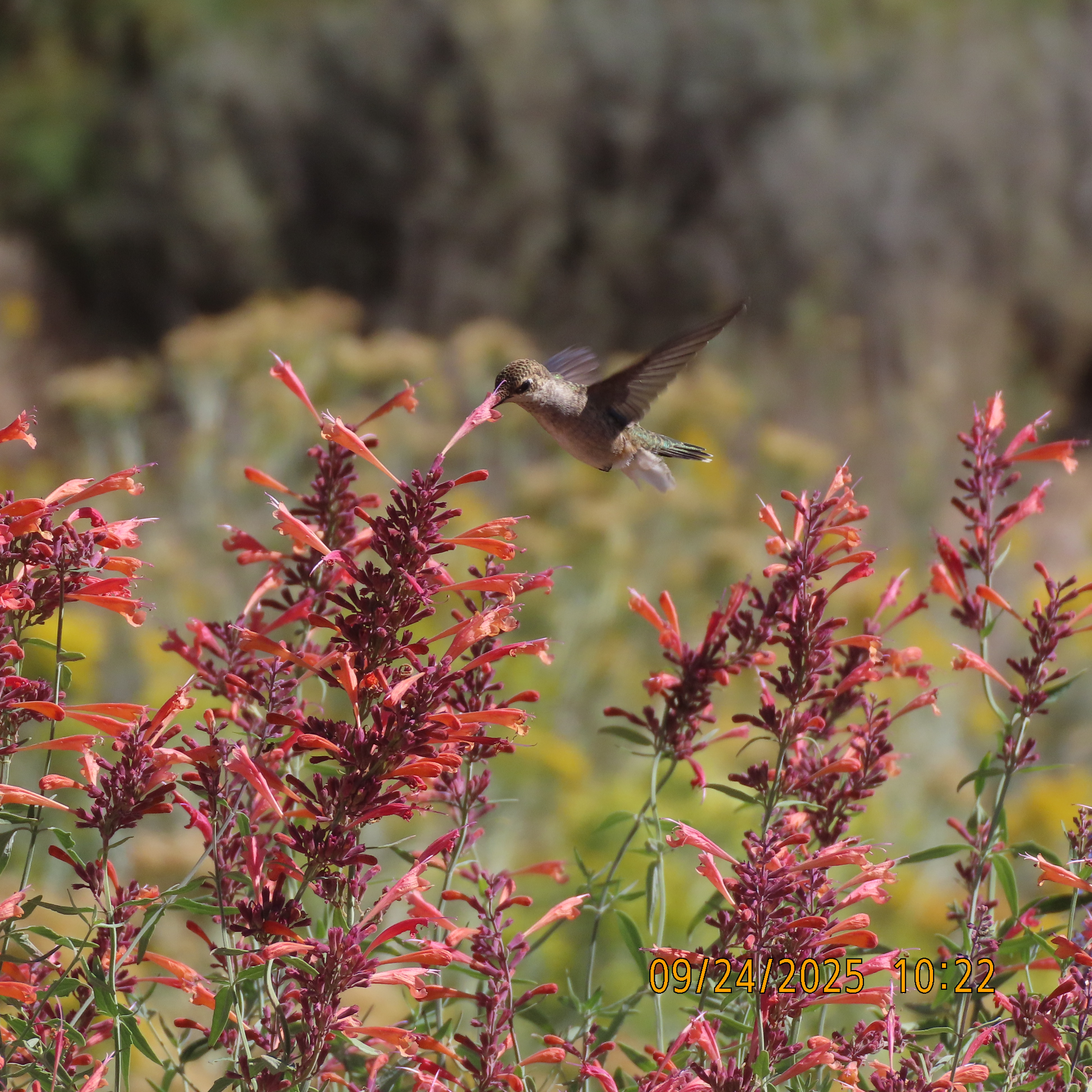 Rufous Hummingbirds (top left) are the smallest of these favorites, and can migrate from Alaska to southern Mexico. They are so tiny and still migrate a very long way. We usually start to see them here in July, after they have already quickly completed their nesting farther north. They are feisty little buggers!
Rufous Hummingbirds (top left) are the smallest of these favorites, and can migrate from Alaska to southern Mexico. They are so tiny and still migrate a very long way. We usually start to see them here in July, after they have already quickly completed their nesting farther north. They are feisty little buggers!
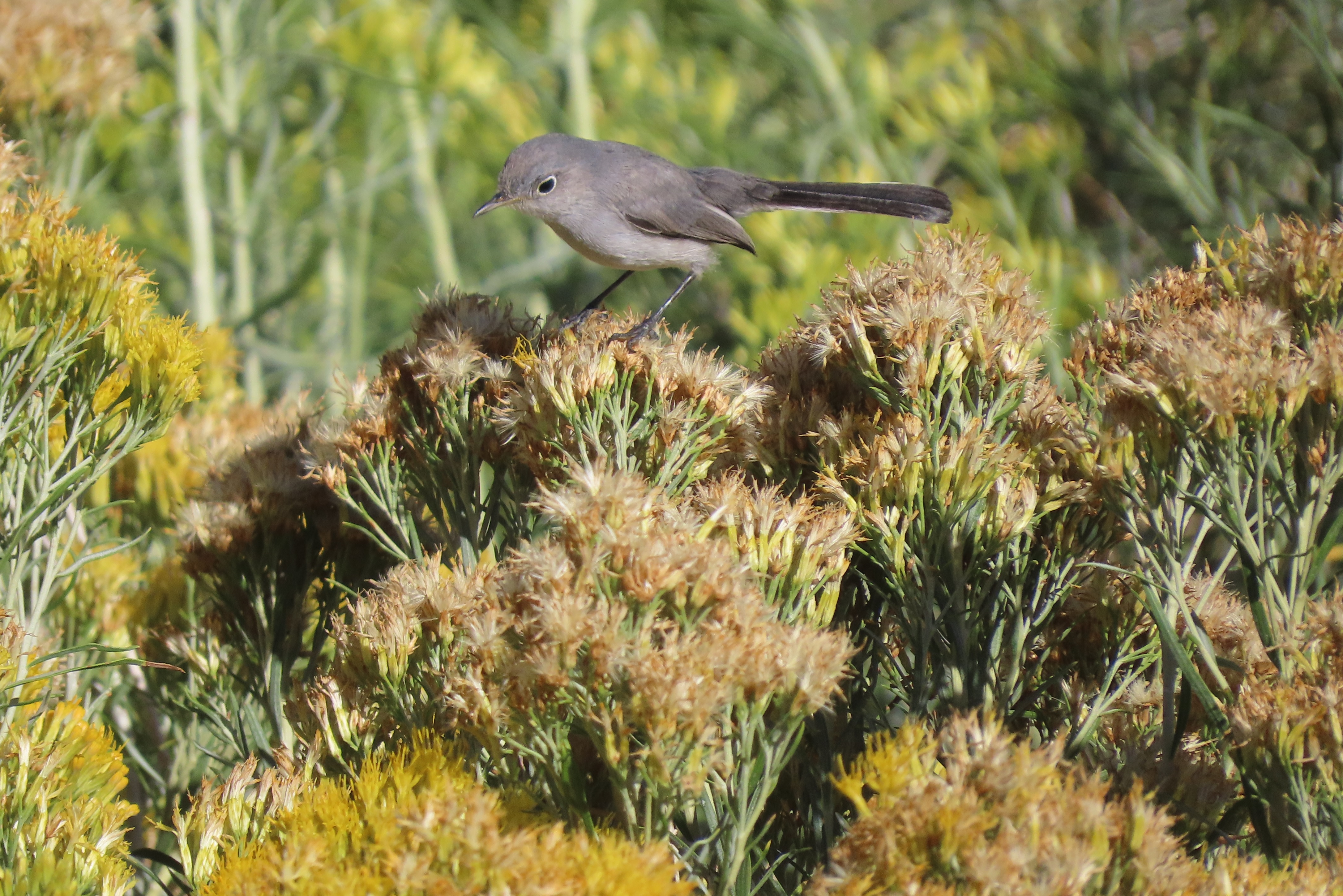 Blue-Gray Gnatcatchers (bottom left) are busy little birds, which migrate from the northern US to southern Mexico. They are always busily catching tiny insects. I photographed one in my yard today, feeding on the rabbitbrush as I am writing this.
Blue-Gray Gnatcatchers (bottom left) are busy little birds, which migrate from the northern US to southern Mexico. They are always busily catching tiny insects. I photographed one in my yard today, feeding on the rabbitbrush as I am writing this.
MacGillivray’s Warblers (right)are a beautiful warbler that I seldom see, but they nest around here in the mountains. They sing loudly, from deep in the thick willows. They can migrate from central Canada to southern Mexico. How do these tiny birds find their way?
Wilson’s Phalarope is a shorebird that nests inland in southern Canada, and can migrate to the tip of South America. We have picked up signals from two of these birds on our Motus tower.
Some modern tools you can use yourself include:
BIRDCAST (https://birdcast.info/about/) is a website that forecasts how many birds will be migrating each night in the fall and spring. It bases these predictions on future weather forecasts and past bird migration flights that were recorded using weather radar. You can check this website and see what is forecast in your area.
MERLIN is an App for cell phones that can listen to bird songs and identify them to a particular bird species (https://merlin.allaboutbirds.org/). This app is free to download and easy to use, from the Cornell Lab of Ornithology.
EBIRD is another program (https://ebird.org/) that you can use to report your sightings, and see what others have found, and even see what birds are present, in almost any other location in the world.
The National Audubon Bird Migration Explorer is a tool to help visualize all kinds of data about each bird species’ migration route (https://explorer.audubon.org/). There are also several other apps that can help with bird identification.
At Ridgway State Park, each fall, there is a bird banding station located in a thick patch of woods at the south end of the park. This year was the 17th year, from September 2 to 13. In that time, 135 individual birds were gently caught and banded, from 30 species. Each bird is banded to study it as an individual and as part of a global study of bird movements. This is a partnership between Colorado Parks and Wildlife, Black Canyon Audubon Society, and the Bird Conservancy of the Rockies. Data from each bird is reported to a national database maintained by the USGS Bird Banding Lab in Maryland. Besides the scientific banding of the birds, at Ridgway, hundreds of students from three counties had the chance to come watch the banding and participate in some activities about bird migration. We hope the birds banded here will be observed someday at another banding station, in Colorado or far away. That will be one more little piece of knowledge added to the giant jigsaw puzzle that is bird migration.
How do we know so much about where the different bird species are going? One of the newest methods for tracking migrating birds is Motus radio towers. The Motus Wildlife Tracking System is an international consortium of about 2200 radio towers, in 34 countries, primarily the USA and Canada (https://motus.org, Motus is Latin for “movement”). The goal is to jointly track radio-tagged creatures from any research project. This project uses tiny radio-transmitters, smaller than have ever been available before. A series of radio towers can receive a short transmission from a migrating bird, bat, or large insect, that was previously banded with the tiny transmitter. Black Canyon Audubon has built one of these radio receiving towers in Montrose, about 30 feet tall, that can receive signals from as far as 15 miles, whenever a tagged animal flies over. This is one of the few Motus towers in western Colorado. So far, we have received radio-signals from 5 birds flying over, a white pelican, a willow flycatcher, a tree swallow, and two Wilson’s phalaropes. These birds were all captured and tagged, far to the north, and then headed south on their migrations, passing by our tower. The resulting data are open-sourced, and you can look at a map of the routes any of these birds have followed, as they have triggered towers along their route (access the data using https://motus.org/, Chris Lazo Memorial Station).
Fall is a great time for you to get out and look for some birds as they migrate south. Audubon leads several birding trips each month that are free and open to the public. They are a great way to get started learning about this amazing migration spectacle.
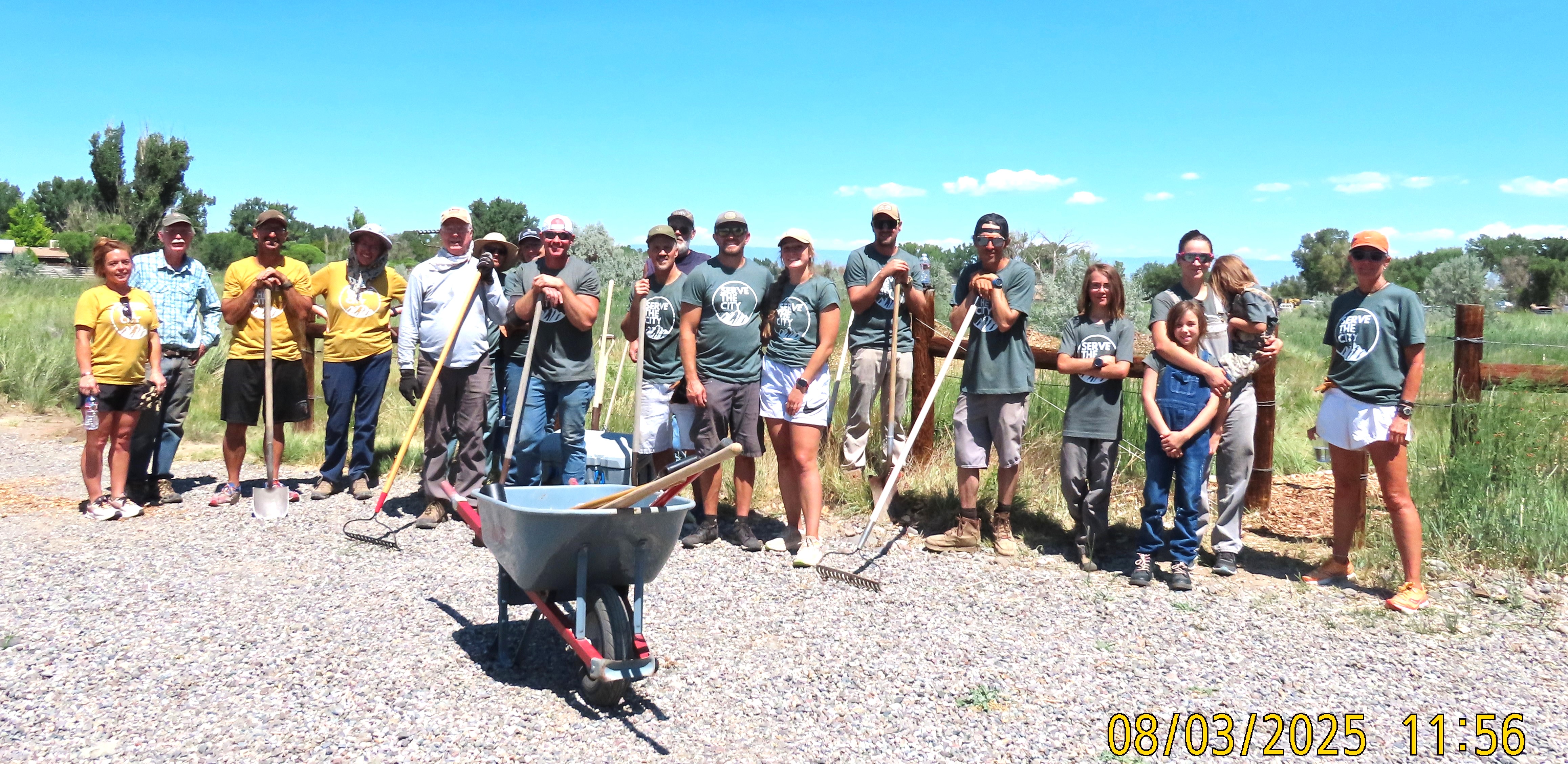
Thanks to Grace Community Church Volunteers: Trail Maintenance at the Marine Road Wildlife Area
For the past seven years, on the first Sunday in August, Grace Community Church (Grace) has provided congregants a variety of volunteer opportunities to work on projects within the Montrose area. On August 3, 2025, 500 church members signed up to volunteer their Sunday morning as part of Grace’s “Serve the City” volunteer project. Volunteers sign up in advance, attend an early morning gathering at the church, then arrive at their chosen location by 8 a.m. They work without a break until noon when they thank us for the opportunity to serve and leave to enjoy a prepared lunch at Grace.
Thanks to support from Dan Payne, Montrose Parks and Special Projects Superintendent, and Jon Sullivan, Public Works Special Events Manager, The Marine Road Wildlife Area (MRWA) has benefited each of the past three years from Grace’s annual volunteer effort. Bark mulch from tree management on City property was provided and delivered by Public Works.
This year, Grace initially assigned 10 volunteers to MRWA. Kurt Scriffiny returned as leader for the MRWA volunteer group. In addition, Black Canyon Audubon Society members Jon Horn and Bill Harris were present to work alongside the Grace volunteers. An unexpected nine additional volunteers from Grace arrived to help after completing their project at Taviwach Park earlier than expected, making a total of 21 workers for the mulch project.
Volunteers were asked to come with shovels, rakes, or wheelbarrows, if they had them, as well as water, gloves, and sunscreen. None of the trail areas has shade, nor are there any facilities present. Using shovels, two pickup trucks were loaded with mulch and driven to selected locations along two original trails where other team members used rakes to spread the mulch along the trails. A third newly marked but quite rugged trail required more effort. Pickup truck loads of mulch were left near both ends of the trail then shoveled into wheelbarrows and carts that were pushed or pulled along parts of the trail for distribution, at which point, other volunteers spread it with rakes.
Thanks again to Grace Community Church and their volunteers for providing needed help and demonstrating through their actions the values they hold.
The following photos show the results of the recent volunteer effort.
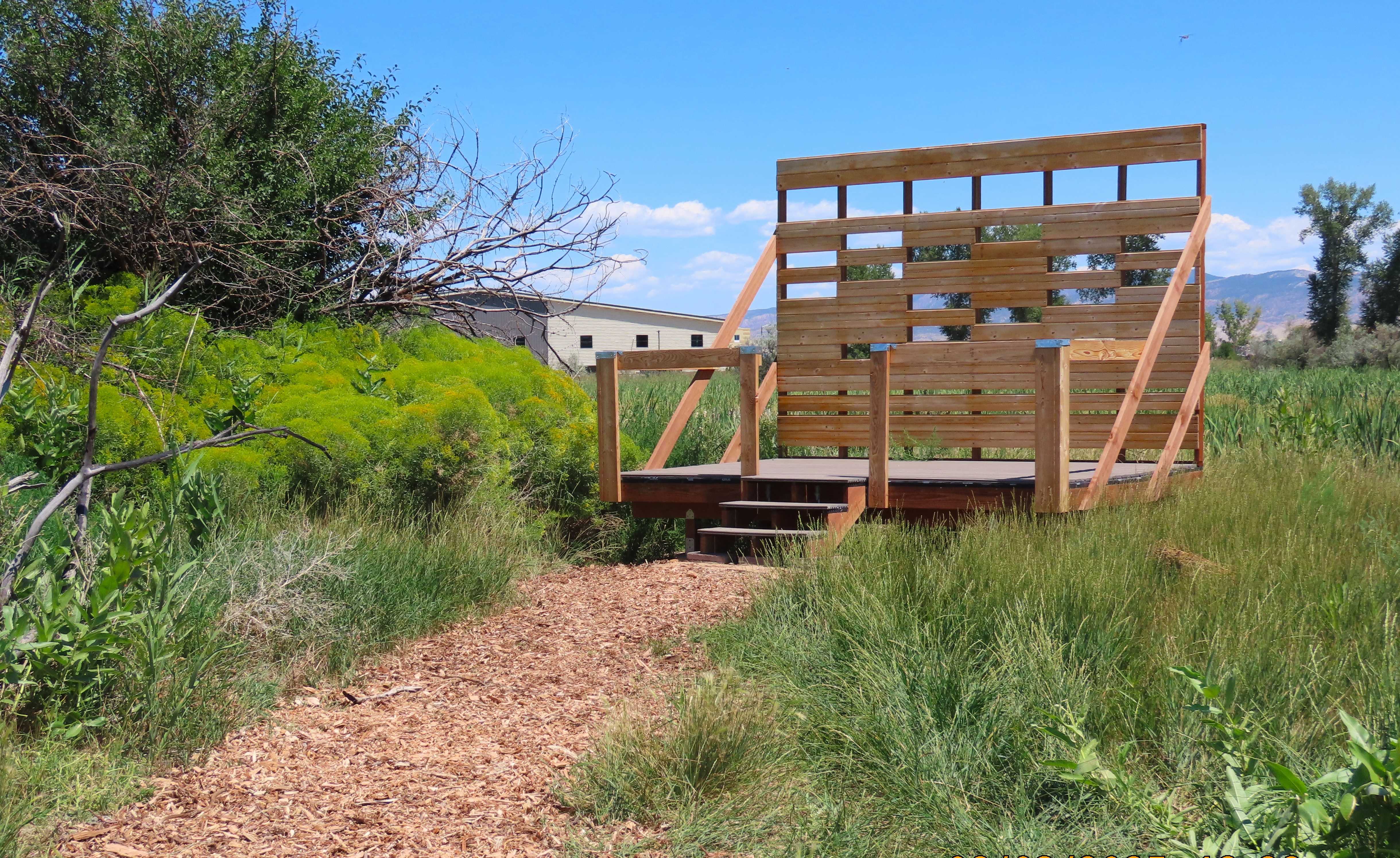 Mulched trail to access the north bird blind
Mulched trail to access the north bird blind
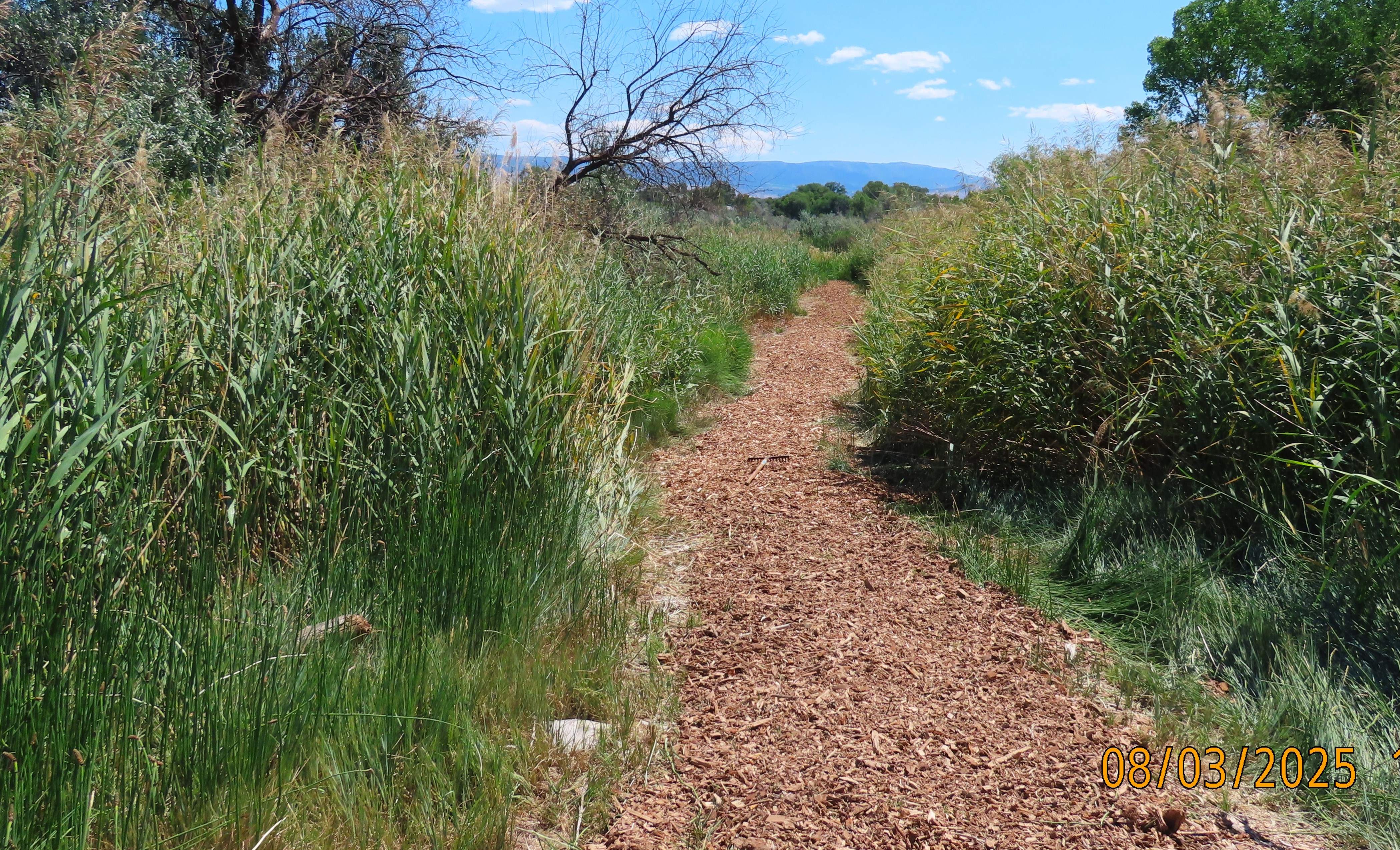 Mulched trail to the south ponds.
Mulched trail to the south ponds.
